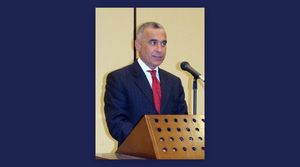The Las Vegas Grand Prix is making headlines for its decision to forgo the increasingly popular Formula 1 sprint race format. This decision marks it as distinct from other Formula 1 events taking place on U.S. soil, like those held in Austin and Miami, where sprint races have already been integrated.
Last year's Las Vegas GP was the first held in 39 years, and organizers have remarked on the unique nature of the event—making the sprint format appear impractical. The Las Vegas race happens along the iconic Strip and was characterized by high levels of overtaking, attracting significant attention from fans and proving to be one of the more thrilling experiences of the season.
Formula 1's chief commercial officer, Emily Prazer, commented on why the sprint race would not fit the dynamics of the Las Vegas course. She emphasized, "I think one of the big takeaways from last year is how insanely good the racing was," reinforcing the belief among organizers to maintain focus on the main race rather than adapting additional formats.
The Las Vegas GP is carefully scheduled between two other American races, Miami and Austin, creating a distinct spectacle for fans. Prazer also pointed out logistical challenges, highlighting the difficulty of opening and closing the Las Vegas Strip's roads for the race. "We have to open and close 42 locations throughout the day," she noted. This speaks to the towering complexity of coordinating such events in a city renowned for its fast-paced activities and vibrant nightlife.
Even before the 2024 race, some industry insiders and fans were buzzing about the sprint race concept. Nonetheless, the Las Vegas organizers remain adamant about not going down this route. Their focus lies on bolstering the main event instead. Renee Wilm, the chief executive of the Las Vegas Grand Prix, echoed this sentiment by stating, "We are quite comfortable letting Austin and Miami keep the sprint, because we've got so much more happening anyway and we're in a really good place."
This statement has stirred conversations about the future direction of Formula 1's race formats, especially as the sport continues diversifying to attract broader audiences. While many other circuits might explore the sprint format to heighten excitement, the unique challenges posed by Las Vegas keep the organizers standing firm.
Last year’s Las Vegas GP left fans on the edge of their seats, and with three races left, it creates potential intrigue over the future direction of the championship. With Max Verstappen currently leading the drivers’ standings, eyes will be peeled to see if he can clinch his fourth consecutive title, particularly as the excitement builds around the Vegas event.
Promoters like Steve Hill, CEO of the Las Vegas Convention and Visitors' Authority, noted the significant boost the race has provided to the local economy, pointing out, "November last year was the second-best month in our history," showing substantial engagement from both local and tourist attendees. This economic impact might play heavily on the decision-making for the future of race formats, especially as popularity surges.
Critics of the sprint race format have voiced concerns about diluting the prestige of the grand prix. Many purists argue it could diminish the value of traditional race weekends. The organizers have chosen to remain focused on the strengths of the main event—the heart and soul of Formula 1 racing, which also showcases driver skills over enduring laps rather than condensing it to shorter sprint events.
While fans from Miami and Austin might be enjoying their sprint races, the Las Vegas GP will seek to forge its own identity—leaning on the extravagance associated with the glamorous locale rather than joining the pack chasing the burgeoning sprint format. This unique selection undoubtedly caters to the Las Vegas audience which thrives on larger-than-life spectacles, diverging from the sprint-focused strategies.
The stakes remain high as the world watches to see if Max Verstappen will secure his championships during the expected high-stakes excitement of races leading up to the Vegas GP. With organizers making distinctive choices about how they want to present their unique offerings, it seems the Las Vegas Grand Prix is poised to continue honing its special charm and identity, keeping the thrill alive without adopting every new formula trend.
All indications point toward the intention of Las Vegas GP organizers to keep their race as the focal point—a place where champions are made and high-speed battles take center stage without the addition of the sprint race complex. Through innovative choices, they aim to create unforgettable experiences for fans, aligning the grand tent poles of Formula 1 with the dazzling atmosphere of the city for years to come.



